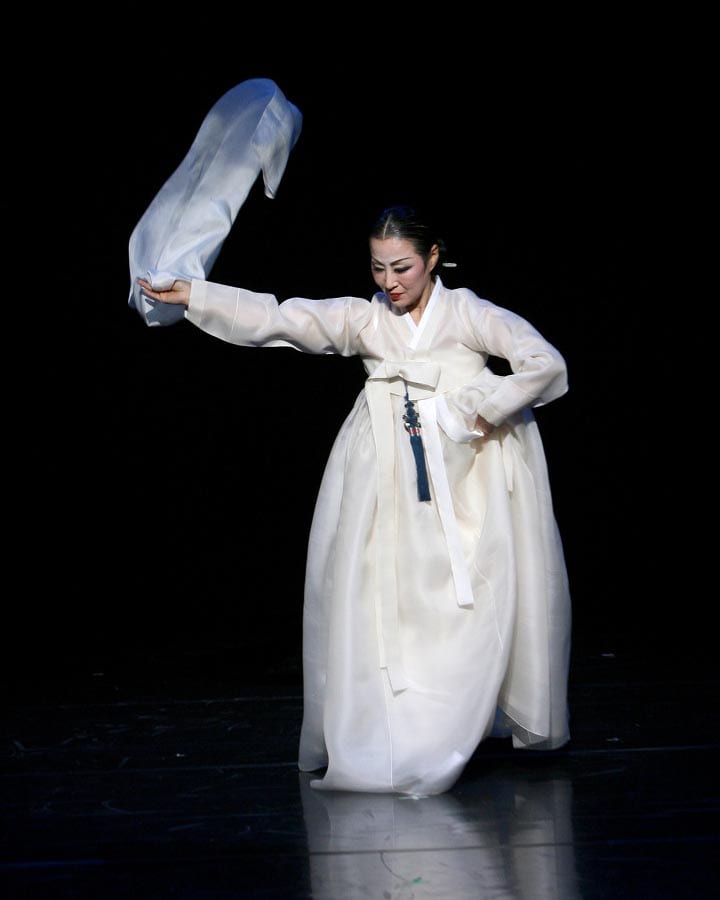
Salp’uri dance exudes a feeling of sorrowful submissiveness, but it is in fact a prayer in motion. Largely pertaining to Kyônggi and Chôlla regions, Korea’s Intangible Cultural Asset No. 97, salp’uri, is generally viewed as a dance with sophisticated choreography accompanying haunting melodies and spiritual mysticism. The dance sequence also follows the rhythmic progression from slow to fast, as in sanjo. With a long silken scarf as the essential prop, the movements are controlled yet free, and serene on the surface with a dynamic undercurrent. The tone of music is a sad mourning which is liberating to the soul. The primary inspiration for salp’uri dance was the Midwestern and Southern kut, indigenous cleansing ritual performance. Traditionally, Koreans believe the souls of the departed must be cleansed of their earthly attachments ahead of their journeys to the other world. The bereaved also need to accept the eventual divide between life and death. A community needs to come together to restore their collective wellbeing by purging the unsavory elements threatening their communal existence. A ritual performance is typically a conglomeration of ka, mu, and ak, a trinity of “song, dance, and instrumental music.” The music of the regional ritual is referred as sinawi, and from start to end and beyond, the music, chant, and the presiding shaman’s dance combine to heighten the ritual’s efficacy. Etymologically, sal refers to negative spiritual or emotional forces targeting a person or community causing physical or mental anxieties, grievances, or misfortunes. Sal needs p’uri, i.e., proper purging or resolution through divination, invocation, appeasement, cleansing, then removal. For example, ssitkimkut, a cleansing ritual performance of the southwestern regions, including the Islands of Jindo, is a continuing source of inspiration for emergent creative forms.